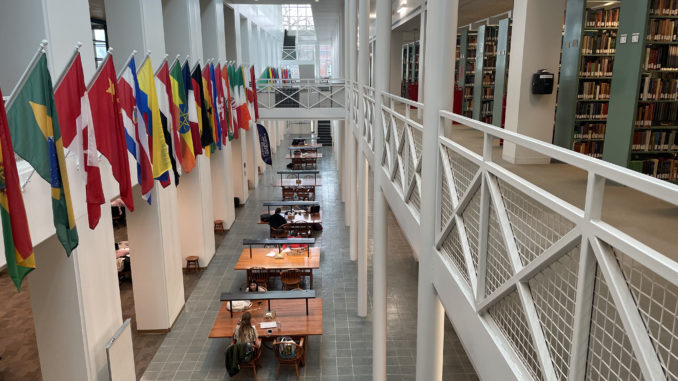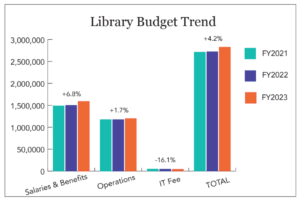
Truman State University’s Pickler Memorial Library has been focusing more on database and online resources, and has subscribed to a service called OverDrive, similar to a digital popular reading section.
The library has a collection development policy for acquiring new resources. The goal of this policy is to make sure the library has the materials to support the curriculum and the mission of the University, said Janet Romine, dean of libraries and museums.
The library must think about which items would be helpful for students to be successful in their majors, Romine said.
Much of the purchasing for the library’s physical resources is faculty-driven, Romine said. Faculty will request items for the library to purchase through a liaison system. There are different librarians for various disciplines to help with this process and work with faculty on these requests.
Item requests are then sent to the acquisitions area, where two library assistants do the majority of the ordering. Romine said ordering is divided into physical items as well as the ongoing ordering for databases and journal acquisitions.
Items are then cataloged and placed on the shelves of the library, Romine said. Last year the library added 2190 bound volumes and 2455 media items, and 2635 items were withdrawn from the library last year.
There is a deselection process for books that have been chosen to be removed from the general collection. Reports are run on how often books have been checked out and when the last time each item was checked out. This process is gone through for the various sections of the general collection, Romine said.
When deciding on possibly deselecting an item from the collection, the library also looks at how many, if any, Mobius libraries have the item, Romine said. The library also takes historical value into consideration when looking at items for deselection.
When a list of items for deselection for a specific section has been created, it is shown to related disciplines and departments, so faculty can contribute their opinion on if certain items should be deselected, Romine said.
Deselected items are part of the annual books sale.
The point of the deselection process is to make sure there is enough room for new items so the collections are up-to-date and continue to support the curriculum, Romine said.
“Because of the shift from print to digital, providing access to digital content, we aren’t ordering as many physical items as we have in the past,” Romine said. “About 80-85% of our purchasing budget for acquisitions goes to ongoing items like databases and online journal content and ebooks and things like that.”
The library does keep some physical items. Physical item check-outs have declined in the past years, but they are still popular, and the popular reading section is still highly used, Romine said.
The library has recently subscribed to a service called OverDrive. OverDrive is similar to a digital popular reading section, and is connected through the Mobius membership. OverDrive has some academic items, but most of the items in that collection are closer to recreational reading items, Romine said.
There will be changes to Mobius software system in the future, Romine said, but the library will continue to use Mobius, and it should work the same on the user end.
A conversation about rightsizing the collection, which means talking about the right amount of print items needed, is ongoing Romine said.

The library’s budget has three categories. The first is salaries and benefits for employees of the library. The second is operations and these funds are used to get new books and subscribe to databases, as well as other items the library needs. The third is the IT fee, which is split between the library (32%) and Information Technology Services (68%).
The IT fee is $17 per semester for students carrying six or more credit hours, said Dave Rector, vice president for administration, finance and planning.
“Overall, over a three year period [the library’s] budget is up 4.2%,” Rector said. “There’s no dramatic increase and no dramatic decrease.”
The money that is funding the library comes from both tuition and state funding, Rector said.
